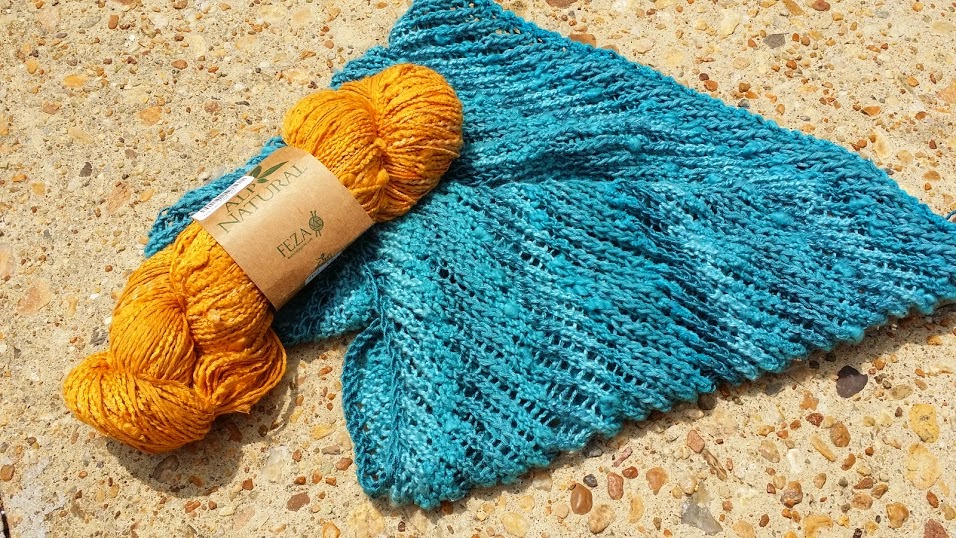Let’s Talk!
We love when a simple yet elegant pattern comes along and we
all fall in love. The Dangling Conversation by Mindy Ross is just that. Using
one skein, simple design, easy to follow directions, simple stitches yet not
boring, beads if you want them, and a large needle this knit is perfection!
The conversation started like this….
Our new Quince & Co. Sparrow, 100% linen, fingering
weight yarn came in the shop. We sold a
bit, but folks were not sure what to make.
At under $10.00 a skein, everyone loved the price, but still could not
get their hands around a project. So I
asked my mother, Lora the knitting machine, to take a look and see what she
could come up with. Right away she said,
“I’m going to make a Dangling Conversation!”
And so the conversations started.
Next I asked if she could knit one up in one skein of our
Madelinetosh Dandelion. Six hours, yes,
I did say six hours, later another Dangling was born. Then there was a skein of Freia handpaint in
Velvet sitting in her stash. She walked
by it every day, but it hadn’t told her what to make yet. Then it hit; another Dangling
Conversation. This one stole the show
and I had to reorder Freia quickly.
She has now completed 10 conversations. She has made them bigger, smaller, used
fingering yarn, sport yarn, lace yarn and just about any yarn she can get her
hands around. One is going to her
favorite nurse at her doctor’s office, three are in our shop, one went home
with her oldest Granddaughter in Tosh Merino Light color Neon Peach, one she kept for herself and still
going.
 Our customers have gotten quite creative with the pattern,
too. One gal pulled a skein from her stash, matched it up with two more at the
shop and went BIG! Wow! It makes a statement.
Our customers have gotten quite creative with the pattern,
too. One gal pulled a skein from her stash, matched it up with two more at the
shop and went BIG! Wow! It makes a statement.
Our very own Terry started a rash of Dangling
Conversations in our new Done Roving Yarns Transitions (right). She cut the yarn when she finished each
section as she saw fit. Many of our
knitters followed her lead. Yes, I
will order a few more Transitions as this conversation is continuing.


Now we have discovered that all skill levels are enjoying
this knit and it is becoming the Go-To pattern this holiday season. We have a few completed in Manos Silk Blend
that knocked us off our feet. This DK
weight yarn yielded a warm and cozy shawl.
It is big and soft and just wonderful around a light jacket.




























